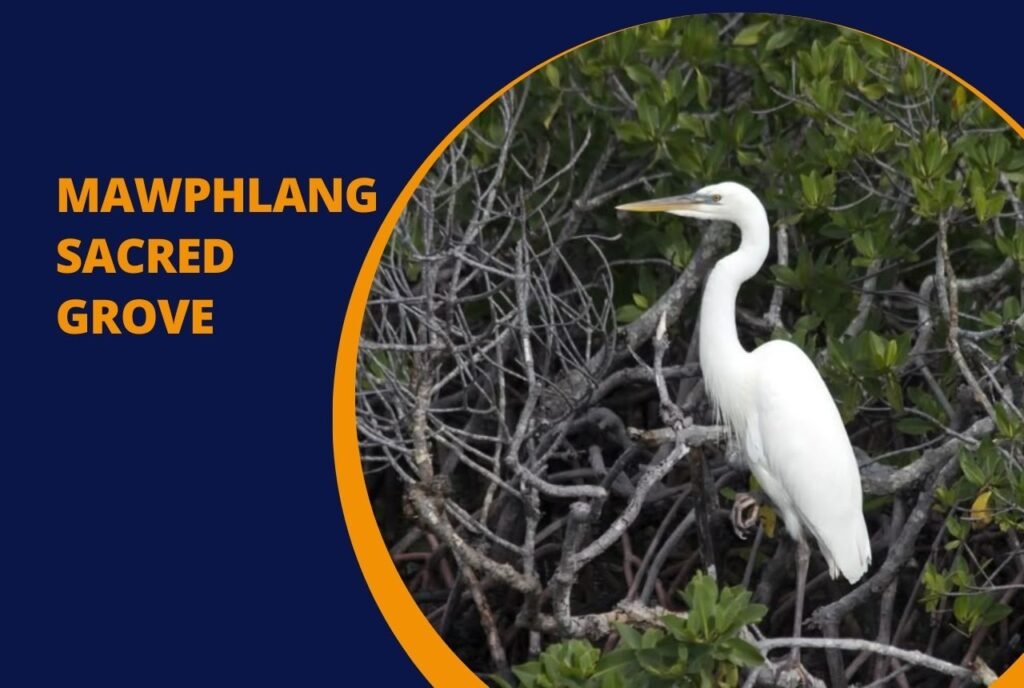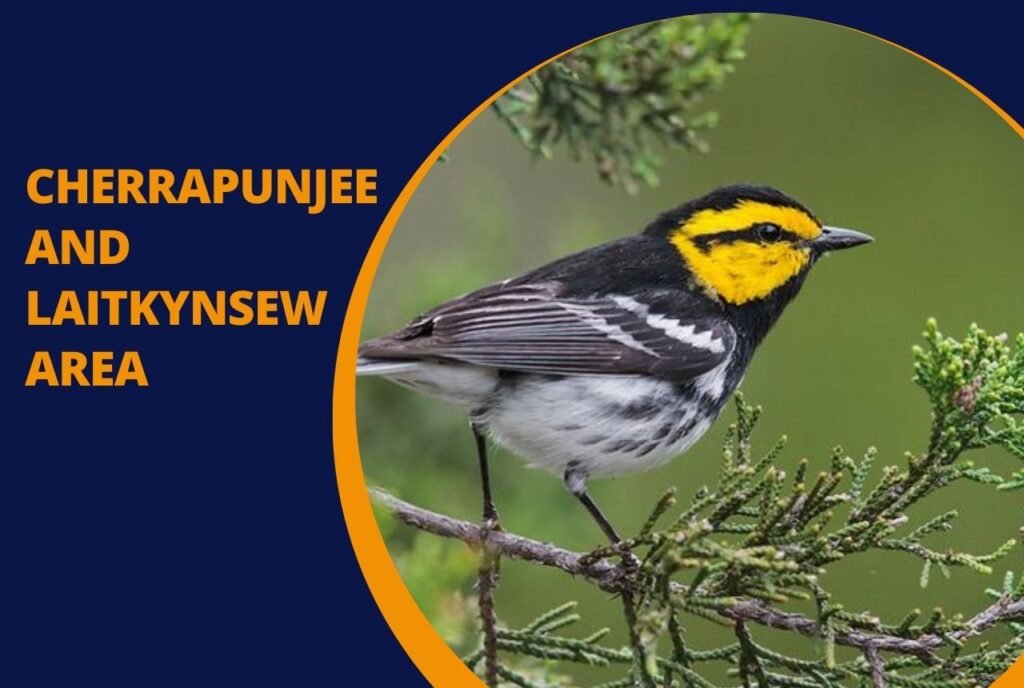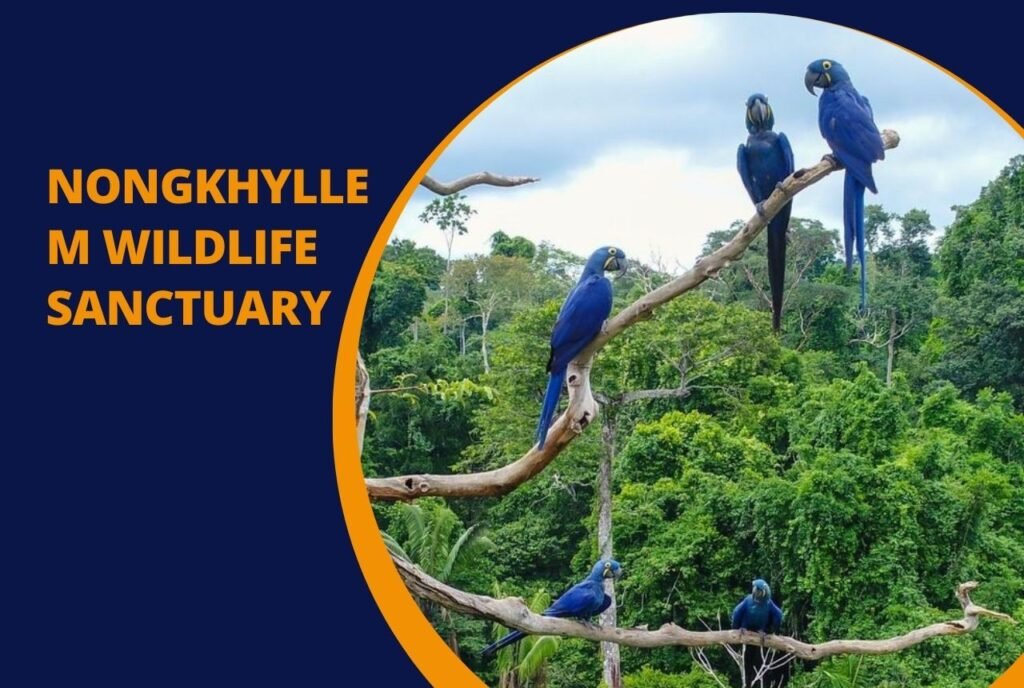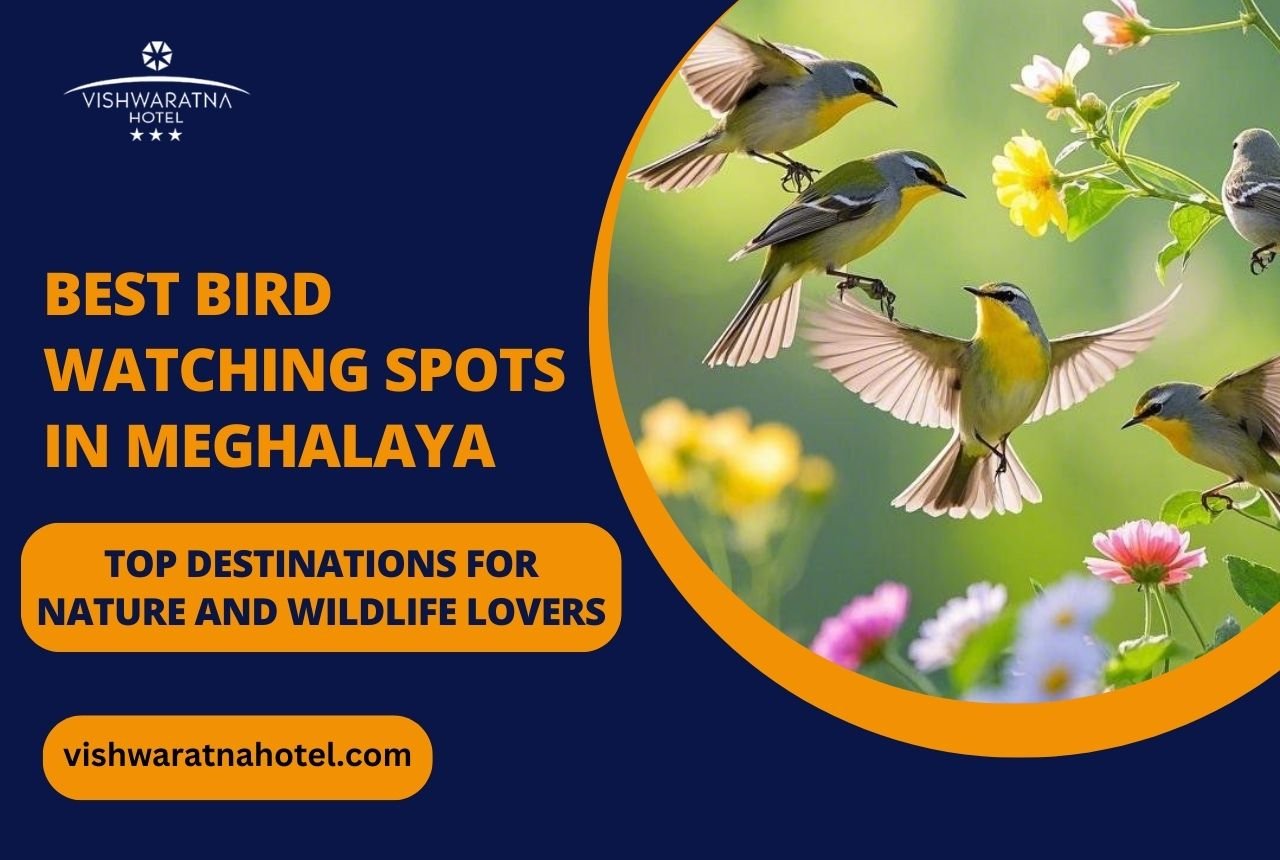Best bird watching spots in Meghalaya are a dream come true for birding enthusiasts. Nestled in the heart of Northeast India, Meghalaya boasts rolling hills, misty forests, and high rainfall—creating an ideal ecosystem for a wide variety of bird species. Its unique geographical location—acting as a transition zone between different biogeographic regions—makes Meghalaya a hotspot for avian diversity.
As of December 2018, over 685 species of birds have been recorded here, making it a significant destination for both amateur bird watchers and seasoned ornithologists.
Meghalaya is home to the Hill Myna (Gracula religiosa), a striking and vocal bird that also happens to be the state bird. The winter months, especially from November to February, are considered the best time for bird watching, as the region welcomes several migratory birds from across the globe. With its lush forests and vibrant birdlife, Meghalaya truly is a birding paradise waiting to be explored.
Best Bird Watching Spots in Meghalaya for Avian Enthusiasts
Meghalaya stands out as one of India’s most exciting birding destinations, thanks to its diverse habitats—ranging from tropical and subtropical forests to high-altitude grasslands. These habitats host a wide array of bird species belonging to four major faunal elements: western Indian, south-eastern, Indo-Chinese, and Indo-Malayan origins.
Birdwatchers often witness migratory patterns that peak during the colder months, when flocks of birds from colder regions arrive to seek refuge in Meghalaya’s warmer climes. One of the most fascinating spectacles here is the appearance of mixed species flocks, also known as bird waves—a phenomenon where different bird species move and feed together in synchrony, creating a vibrant and dynamic experience for observers.
From valley sanctuaries to sacred groves and national parks, the best bird watching spots in Meghalaya offer an unmatched avifaunal richness that is both thrilling and meditative for nature lovers.
Top 5 Bird Watching Destinations in Meghalaya
1. Mawphlang Sacred Grove
Located about 25 km from Shillong, the Mawphlang Sacred Grove is a pristine forest protected by local traditions and religious beliefs. The grove hosts a rich biodiversity supported by its unique microclimate.
Bird watchers can spot species like the Long-tailed Broadbill, Grey Sibia, and Rufous-necked Hornbill among others. The best time to visit is between November and March, when visibility is high and migratory species are present.

The moss-draped trees, dense canopy, and filtered sunlight offer excellent photography opportunities, especially during early mornings and late afternoons.
2. Cherrapunjee and Laitkynsew Area
Famous for being one of the wettest places on Earth, Cherrapunjee and nearby Laitkynsew boast breathtaking landscapes, gorges, and waterfalls—making it a birding hotspot with 197+ recorded species.

The area is home to the elusive Dark-rumped Swift, also known as the Khasi Hills Swift. Other species include the Black-breasted Parrotbill and the Blue-throated Barbet.
Popular birding spots include the cliffs near Nohkalikai Waterfalls, where swifts are seen gliding effortlessly. Watch for bird waves in the early morning, especially after rains clear the skies.
3. Balpakram National Park Complex
Located in the South Garo Hills, Balpakram National Park is often referred to as the “Land of Spirits” by locals. Its canyons, plateaus, and forested slopes support a remarkable range of birdlife.

Rare species such as the White-winged Duck, Blyth’s Kingfisher, and the Green Cochoa are found here. The park also offers opportunities to see larger raptors like the Crested Serpent Eagle.
Accessibility requires permits from the Forest Department, and guided treks are recommended. Bird watchers prefer trails around Mahadeo Hill and Pandava Caves for a complete experience.
4. Nokrek Biosphere Reserve
A UNESCO Biosphere Reserve, Nokrek in the West Garo Hills is one of Meghalaya’s crown jewels. It is home to the Hoolock Gibbon and many rare birds, including various species of pheasants.

The Grey Peacock-Pheasant, Himalayan Flameback, and Great Hornbill are commonly spotted here. The Simsang River Valley is an excellent birding zone, particularly in the post-monsoon season.
Well-trained local guides are available, and seasonal fluctuations mean different species can be observed throughout the year. Winter months again offer the best visibility and access.
5. Nongkhyllem Wildlife Sanctuary
Located in Ri-Bhoi district, just 74 km from Shillong, Nongkhyllem is a lesser-known gem with over 400+ bird species recorded.
This sanctuary is one of the best places to spot the majestic Rufous-necked Hornbill, along with White-cheeked Hill Partridge, Asian Emerald Cuckoo, and Oriental Pied Hornbill.

Top viewing spots include the banks of the Umtrew River and the surrounding seasonal lakes. A minimum of two days is recommended to thoroughly explore the area’s birding trails.
Essential Tips for Bird Watching in Meghalaya
- Best Season: November to February is ideal for spotting both resident and migratory species.
- Gear: Carry binoculars, DSLR or mirrorless camera, notebooks, and field guides.
- Clothing: Wear neutral-colored clothing, hiking boots, and light rain gear.
- Ethics: Avoid playback sounds and don’t disturb nesting birds.
- Guides: Hire local guides—they know the best trails and can identify birds quickly.
Rare and Endangered Bird Species to Look For
Meghalaya shelters several rare and endangered birds, including:
- Critically Endangered: Oriental White-backed Vulture, Slender-billed Vulture
- Near Threatened: Lesser Grey-headed Fish Eagle, Red-headed Vulture, White-cheeked Hill-Partridge, Blyth’s Kingfisher, Great Pied Hornbill
- Endemic: Several unique species found in the Khasi Hills region
Despite growing interest in birding, conservation challenges like habitat destruction remain serious concerns.
Where to Stay: Accommodation Options
Before venturing into Meghalaya’s wilds, many travelers choose to stay in Guwahati, Assam’s gateway to the Northeast. The Vishwaratna Hotel, a reputed three-star hotel, offers comfortable accommodations with modern amenities and convenient proximity to transport hubs.
Travelers heading deeper into Meghalaya will also find eco-resorts, homestays, and forest rest houses near top birding spots like Cherrapunjee, Balpakram, and Nongkhyllem—ranging from budget stays to luxury lodges.
Plan Your Bird Watching Adventure in Meghalaya
From sacred groves and misty cliffs to national parks teeming with life, Meghalaya offers a one-of-a-kind birding experience. With a strong focus on conservation and sustainable tourism, bird watchers can enjoy a fulfilling and ethical encounter with nature.
If you’re passionate about birds, nature, and serenity, it’s time to pack your binoculars and explore the best bird watching spots in Meghalaya.




